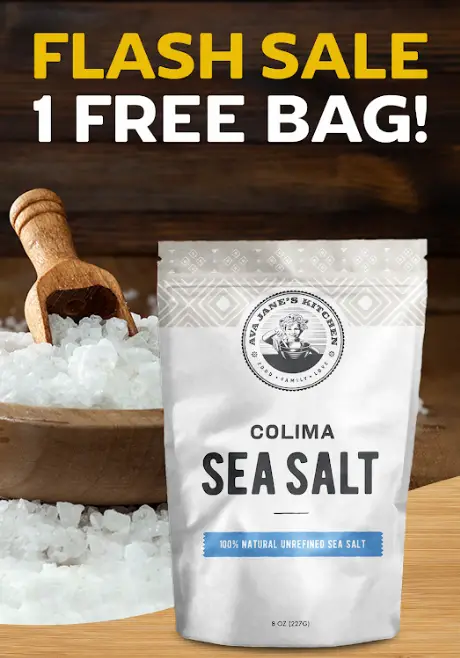Food is sacred no matter what country or what culture you come from: it’s how families bond with each other at the end of the day, how we nourish ourselves, a way to connect with strangers and so much more.
For thousands of years our food producers have treated the process with respect, up until the past few decades that is.
And lately, things have been spiraling out of control, with genetic modification techniques, mutagenesis (subjecting seeds to radiation) and other bizarre production techniques taking over.
More leeway for GMO and artificial food producers has led to several different, wide-scale changes to our food system, and which foods are being approved for human consumption, for that matter.
Perhaps the most shocking of all of these changes took place in 2007, when one of the most bizarre GMO experiments of all-time was advanced, eventually making its way to a field in Kansas: a type of rice backed by the USDA made with human genes.
It may sound too strange to be true, but this is just one of myriad stories involving the genetically engineered food experiment that has been hidden from food consumers of decades, allowed to continually in large part because of government support.
GMO Rice Made from Human Genes, And Other True Tales of Food Experiments Going Wrong
1. Soylent Rice, Anyone?-
California-based Ventria Bioscence made headlines with its proposal to create rice with human genes that was designed to produce human immune system proteins in the seeds, in order to be extracted for use as an anti-diarrhea medicine to be added to yogurt and granola bars (no, seriously).
Despite an outcry from consumer groups warning that GMO crops eventually migrate from their original locations, the franken-rice was backed by the USDA and was reportedly planted in Kansas.
This type of GMO rice is not to be confused with the so-called “golden rice,” the controversial GMO product being produced with the goal of providing more Vitamin A to children in food-insecure countries.
The actual headline from the 2007 Washington Post story on GMO rice backed by the USDA can be seen below:
2. The “Improved” Apple That No One Wanted-
Despite a massive public outcry against genetically modified apples that never brown (and can’t be distinguished from regular apples), they were approved by the USDA this past February.
Consumers didn’t want them, but the never-browning GMO apple’s parent company sure did: after gaining approval, Okanagan Specialty Fruits was sold to Intrexon Corp., and its shareholders immediately received $31 million in stock along with $10 million in upfront cash.
This isn’t quite as disgusting as some of the others on the list but the approval of this apple despite the fact that consumers had virtually no interest in actually eating it just shows how little the USDA and other government agencies care about the people’s will.
And since these never-browning apples won’t be labeled, you probably won’t know if you’re eating them or not, especially in prepared foods (school lunches, anyone?).
3. Pro-Lifers Fight Back-
Did Pepsi really plan to use a line of flavor enhancers derived from aborted fetal cells in its soft drinks?
The company ditched a contract with the biotech company Senomyx after pressure from pro-life groups.
After receiving answers that were mostly vague and unclear (in the form of “legalese”) from Pepsi, the group Children of God for Life dropped a boycott after the company said it would not use “HEK cell lines,” derived from human embryo kidney cells, in its products.
Getting Pepsi to make this assurance took almost a year according to this Washington Times article, however, which makes you wonder what they were really hiding.
And the whole thing certainly makes you wonder why Pepsi would do business with a company that has a portfolio of about 70 patents on “flavor enhancers” made with the HEK cell lines derived from aborted fetuses.
This is just another example of the slippery slope we go down when we begin accepting Biotech’s “food” creations as “normal.”
4. “Contraceptive Corn”-
Based on a rare condition called immune infertility in which a woman makes antibodies that attack sperm, this so-called sterility corn was developed by the San Diego biotech company Epicyte.
Monsanto, Syngenta and DuPont have been linked with the company although Monsanto has denied it.
The company said it would not grow the corn near other crops.
But considering that GMO material has been found in organic plants that were miles away from the source and that we can’t physically see which plants have been affected, it’s safe to say that this is one experiment that never should have seen the light of day.
And unfortunately, these are the types of disgusting and completely unnecessary food experiments that are likely to continue as long as people continue to support Biotech and GMO companies who are more interested in profits than preserving the sanctity and safety of our food supply.

Note: If you think these and other GMO experiments should be labeled at the very least, you can contact your Senators and ask them to vote “No” on the pending HR1599 bill to prevent mandatory GMO labeling. Click here to learn more.
Thanks for installing the Bottom of every post plugin by Corey Salzano. Contact me if you need custom WordPress plugins or website design.




















